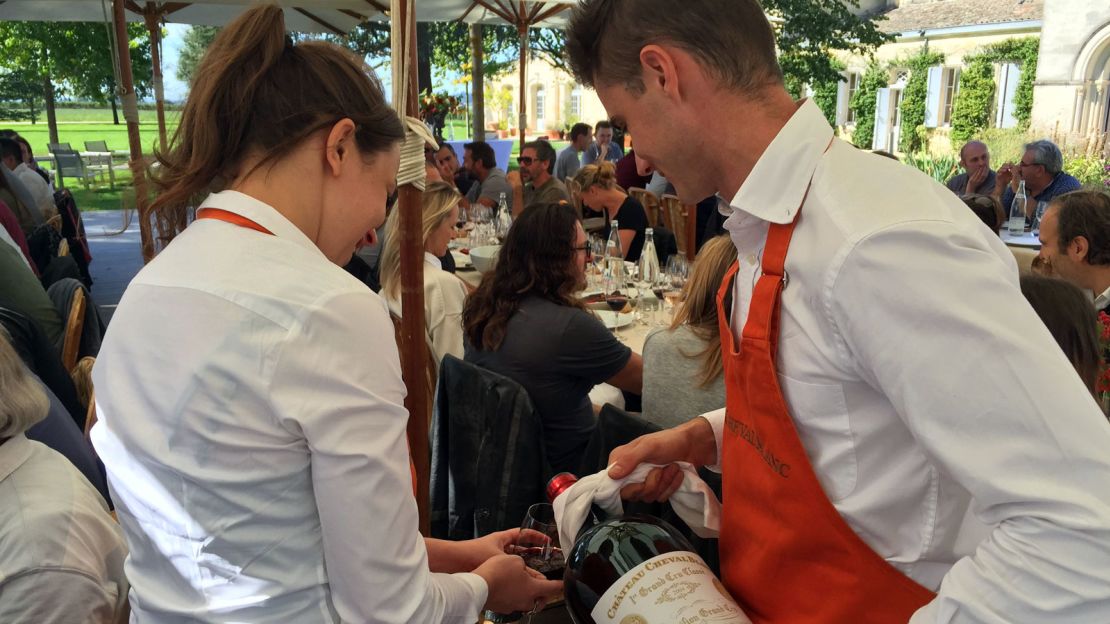You wouldn’t think anyone would be clamoring to spend hours bent over picking grapes.
But a lot of people did just that at one of the most prestigious vineyards in France.
In fact, at one of France’s renowned vineyards, only the lucky 120 people summoned by engraved invitation are allowed to work the harvest.
This is Chateau Cheval Blanc, one of only four locations in Bordeaux’s UNESCO-listed winemaking location of St. Emilion to earn the prestigious classification of Premiere Grande Cru Classe A.
Bringing in the grapes – the “vendange” as it’s known in French – is a tradition here.
Long before there was Facebook or eHarmony, the vendange was one way young people met up and hooked up.
Sure there was the stoop labor by day, but at night you could depend on a hearty meal and vast quantities of the vintner’s best wines to lift the spirits.
Those last two elements were definitely in abundance at Cheval Blanc on the last weekend in September, something that may have attracted a new crowd of not-so-young vendangeurs.
Best harvest ever?

The group included Michelin-starred chefs, architects, aroma experts and others who volunteered to come from all parts of the country to help with this year’s crop.
Pierre Lurton, director of Cheval Blanc, while acknowledging that Bordeaux producers are always saying their current crop is the best, told his workers that this year’s harvest really might be.
All summer, growing conditions across the region were just about perfect, with cool mornings and plenty of sun during the day.
After a copious breakfast, Lurton distributed pruning sheers and sent his pickers into the Merlot vines, each plant heavily laden with sweet, deep purple bunches.
There was a snip and a plop as each fell into the buckets.
When full, the pickers cried “porteur,” and dumped them into plastic baskets on the backs of the strongest of volunteers.
What everyone’s waiting for
While some worked the fields, others were inside at the triage tables where the baskets were poured into machines to shake the grapes from the vines.
Spotters on either side of the tables carefully removed any remaining bits of vine to avoid any impurity that might influence the taste of the final product – a necessary caution if you’re going to charge hundreds of dollars for a single bottle of wine.
But it wasn’t the grape picking or triage tables that led everyone to Cheval Blanc.
It was the lunch tables.
There, with thick slices of rare beef grilled over old grape vines, is what many had been waiting for.
Toting giant six-liter bottles, waiters went from table to table serving the workers endless glasses of Cheval Blanc 2004.
And since Lurton is also director of another well known vineyard, the desert wine wasn’t bad either – a 1987 Chateau d’Yquem.







